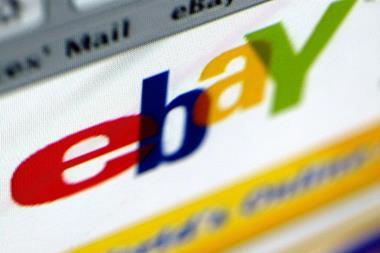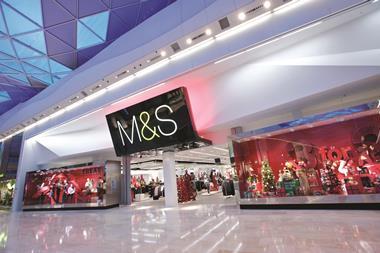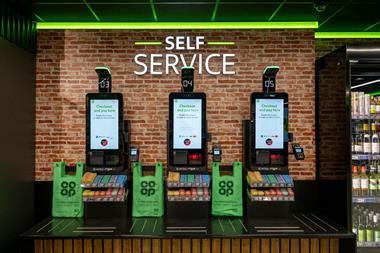As the digital world continues to grow apace, it leaves retailers in a quandary. How should traditional media marry with digital marketing campaigns? Sarah Butler reports

There was a time when 70% of purchasing decisions were made in-store. Today, most shoppers do their research online, or via their mobiles, and flip between different purchasing channels at will. In that environment, digital marketing has become the hottest way to speak to customers.
Retailers and experts agree that spend on digital marketing techniques such as search engine optimisation, affiliate marketing and social networking now take up to 40% of retailers’ marketing spend, compared with less than 10% five years ago.
Simon Goodall, director of strategy at marketing agency Saatchi & Saatchi X, says “there has been an explosion in the last three or four years”, and the agency has had a substantial increase in the digital work it is doing.
Meanwhile, John Lewis, the department store that has been among the UK’s savviest online players, says digital channels – as oppose to traditional, above-the-line marketing such as TV, radio or magazine advertising – have taken an increasing proportion of its marketing spend in the last five years. John Lewis head of marketing Lloyd Page says: “We are now approaching a much more even field between the two.”
Taking the lead
In the current tight financial environment, digital marketing has partly gained an edge because of its ability to speak to large numbers of relevant people directly and relatively cheaply. Unlike poster campaigns or TV ads, digital marketing can also justify itself with response rate data so that marketing teams can assess their return on investment. Susanne Schmid, client services director at marketing company eCircle, says digital marketing has “measurable and actionable data from campaigns, allowing retailers to track return on investment and target consumers with personalised offers”.
But, for most retailers, the move has simply been a natural progression – digital budgets have blossomed alongside online sales. The meteoric rise of smartphones to both research and buy goods is also driving digital marketing investment. For some businesses, the way that spending has developed means that it has become siloed off from more traditional marketing activities.
Aurora Fashions multichannel director Hash Ladha believes retailers are currently looking at the marketing activity on a channel-by-channel basis. “The industry is doing things offline because they have always done them and doing stuff online because it is sexy,” he explains. “Going forward, we will need to look at marketing holistically.” He adds that all retailers will need to try and understand the objective of any marketing activity and look at what the appropriate channel and spend is to reach that objective. “Retailers need to use all channels. I don’t think print advertising is dead, it’s about it being appropriate,” he says.
The right mix of traditional and digital marketing depends, though, on what a retail brand is trying to achieve and the audience it’s trying to reach. Luxury and fashion brands, for instance, are still very much committed to advertising in print as shoppers still enjoy the indulgence of a glossy magazine. On the other hand, clothing and lifestyle products tend to elicit a good response on social network platforms like Facebook, which are a natural extension of real-world discussions of fashion and taste. Other product areas need to work harder to find a niche in that space.
B&Q is on a mission to make it easier for people to do DIY. Marketing director Katherine Paterson says that involves creatively communicating its message to new and existing customers. “Digital media is key to this,” she says. She points to the example of when cricketer Matt Prior broke a window at Lords in June. B&Q placed an advert for new windows with the tag line ‘Broken a window? Inadvertently thrown a bat through a window?’ This appeared on the Google news page ahead of the news articles as it looked to capitalise on the well-publicised story.
Alive and well
But traditional media is far from dead, and Paterson says it is still very important to B&Q. Broad brush, brand building campaigns for a store with a wide appeal like the supermarkets, John Lewis or Marks & Spencer might best be handled via a TV spot, taking a strong message into people’s living rooms.
Brand building can also be done online, using banners on web portals or email services like Hotmail, a medium particularly suited to pure-play etailers such as eBay or Amazon. Nevertheless, online advertising still forms a tiny part of mainstream retailers’ budgets compared with TV, print and even outdoor posters.
Figures from research company Nielsen suggest the grocers, for instance, will spend just 2.28% of their advertising budget online in
2011 compared with 40.72% of their budget, which is blown on TV ads. The proportion is even lower for DIY and fashion chains.
Of course, this doesn’t take into account all the other kinds of digital marketing from social networking to direct emails. Digital marketing really comes into its own when a retailer wants to target specific customer groups with offers or information relevant to them via emails or even texts. It can also foster an interactive relationship with shoppers through reviews or Facebook services, where information and opinion on products can be shared. This interactive element is becoming increasingly important as shoppers rely on advice from their peers as much as, or even more than, traditional sources of information.
Experian’s Hitwise has found that one in six web page visits is to Facebook, and says retailers are increasingly shifting their marketing to meet these customers on their terms. Brands such as Starbucks, Levi’s and Coca-Cola can engage with shoppers via their Facebook pages in a way not seen on their traditional web pages. The trick, according to Ladha, is in identifying how customers want to be contacted.
That’s why Aurora has invested in a customer relationship management system, which it hopes will help it use the right kind of communication method for each customer. John Lewis is doing the same.
What both recognise is that as shoppers increasingly mix and match channels on their purchase journey, retailers need to make their presence felt in the places where they can make a difference. Page says: “That convergence is driving how we are communicating.”
Merging channels
Research suggests as many as 83% of shoppers now make purchase decisions out of the store and in many cases are only on the high street to make a final check. The Marketing Store head of digital Phil Dearson says: “Online versus offline is an increasingly meaningless distinction.
If you’re in a shopping centre comparing prices on a smartphone, is that online or offline?”
The channels are merging. People watch TV but are online with their smartphone or laptop, and smartphones have QR code readers so shoppers can scan a code in a magazine or newspaper to direct them straight to a website for more information, a special offer or to make a purchase.
A joined-up approach not only plays to the way shoppers are behaving but makes for better ROI. It also means expensive but dynamic new ideas such as viral video campaigns can be offset by using the same material in-store or on TV. The onset of digital may bring challenges to the retail marketing team, but as the digital world evolves, it brings exciting opportunities, too.
Inspiring shoppers in the digital era

The convergence between digital and traditional marketing channels is bringing about new selling opportunities. “People are not just consuming media in a different way, they are shopping in a different way, which is even more relevant to retailers,” says Simon Goodall at Saatchi & Saatchi X. “Retailers are blurring the line between sales and marketing channels.”
Electricals chain Best Buy in the US, for instance, has developed a system through which it connects its in-store electricals experts with customers via the social networking service Twitter so they can help answer questions about products. The idea is that it not only improves the image of the brand but also inspires shoppers to make a purchase. Effectively, sales assistants are walking the shopfloor and the virtual isles at the same time. That in turn mirrors shoppers’ move towards checking information on their smartphone while they walk around the store.


























No comments yet